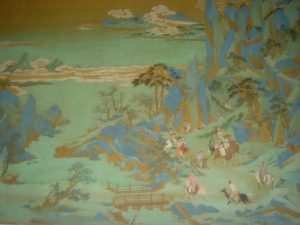The Ming Dynasty social structure had evolved over hundreds of years and was influenced by Confucian thought. There were four broad classifications in Ming society and they were: Shi, Nong, Gong, and Shang.
The Shi: Gentry Scholars
This description of the Shi is not fully correct. They initially came from the warrior caste. Over the years the Shi slowly started to include aristocratic scholars and an educated bureaucracy. Since access to books and knowledge was extremely limited, a scholarly person was highly respected in society.
The Nong: Peasant Farmers
In status, the Nong were only second to the Shi. Farmers were considered the producers of food which sustained the empire and they contributed to state revenue by way of taxes. In a country wracked by periodic famine, the Nong was seen as a vital and productive social class, essential to the empire.
The Gong: Artisans and Craftsmen
The Gong were artisans who had the skills to make objects of everyday use. They were producers like the farmers, but since they were essentially landless, they did not generate revenue for the state. Since they had a skill, which was passed on from generation to generation, they were more respected than merchants. Some of them were successful enough to hire apprentices and labor to increase their production.
The Shang: Merchants and Traders
They were the merchants and traders and since they did not produce anything they were looked down upon by society as those who lived off the labor of others. They only traded and transported the food and goods made by the Nong and the Gong. Many merchants did buy land to command more respect in society. The popular belief at that time was that merchants were only motivated by greed and did not contribute to the greater good of society.
These were the broad classes in Ming society. In the late Ming period, commercialization increased, and wealthy merchants slowly became a part of the landholding gentry. Each class was entitled to different legal privileges. Despite this, government policy was not affected by the four categories.
